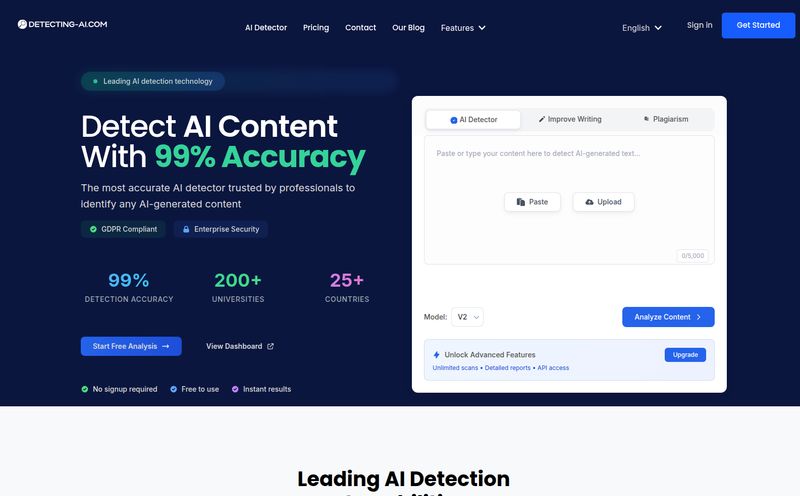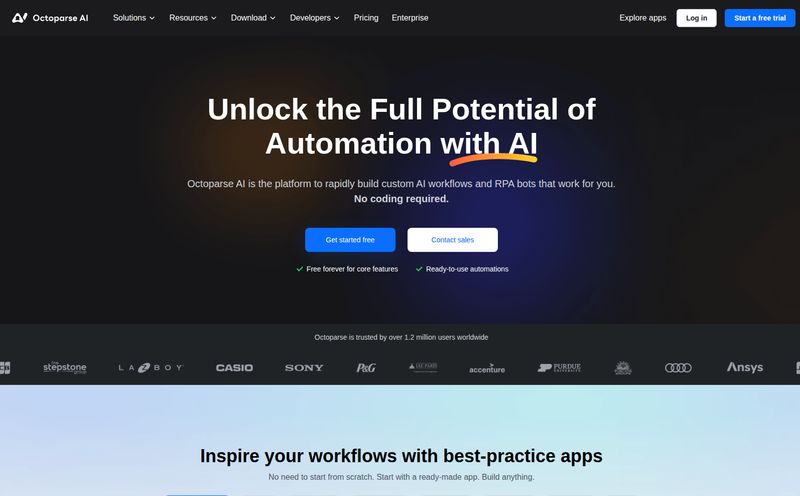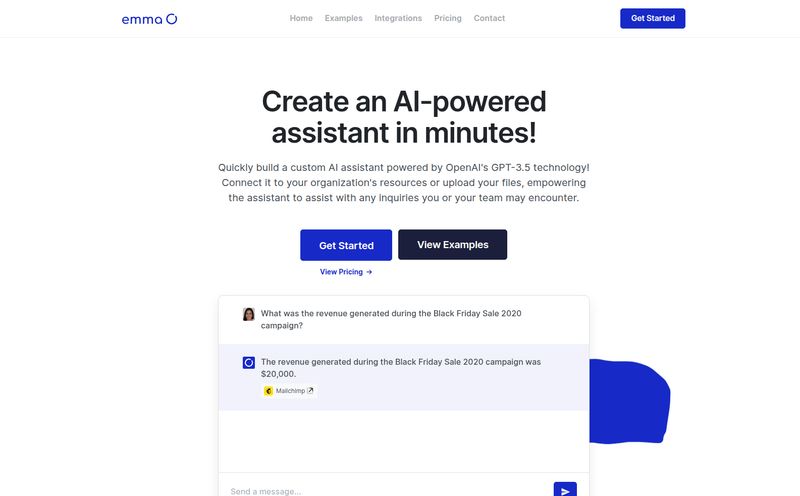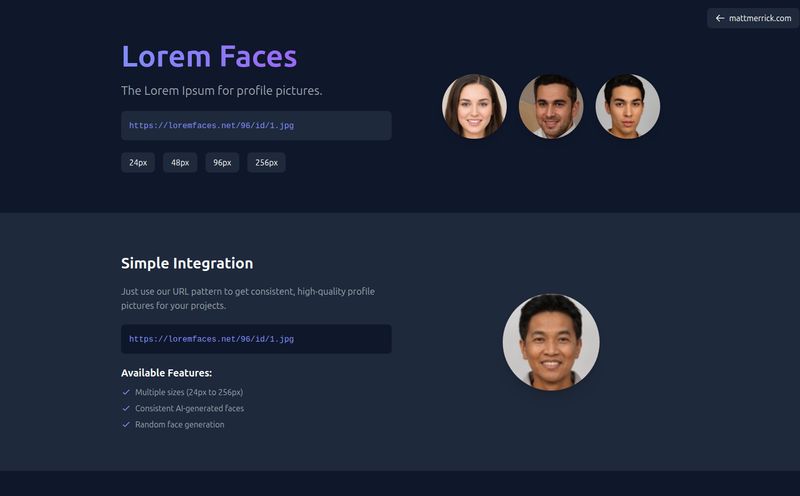If you’re in the fintech or lending space, you know the grind. You live and breathe user acquisition, churn rates, and the constant pressure to create a buttery-smooth onboarding experience. But there’s always that one, giant, ugly troll under the bridge: income verification.
It’s a nightmare. A necessary one, sure, but a nightmare nonetheless. You’re chasing down blurry PDFs, deciphering shoeboxes full of receipts (okay, maybe not that bad anymore), and sinking countless man-hours into a process that feels like it was designed in 1985. It’s slow, it’s expensive, and every second a potential customer spends uploading a document is a second they might just… leave. We’ve all seen the drop-off rates.
So, when I came across a platform called Chart, which claims to automate this whole mess, my inner SEO-nerd and traffic-gen guy sat up a little straighter. Their promise is simple but bold: instant, automated income verification by connecting directly to the source. The IRS. Could this be it? The silver bullet we’ve been looking for? I decided to dig in.
So, What Exactly is Chart?
At its core, Chart is a developer-first platform designed to take the pain out of income and employment verification. It’s not just another OCR tool that tries to read a fuzzy PDF of a W-2. No, this is different. Chart plugs directly into government systems like the IRS and even leading tax software to pull verified, official tax transcripts. That's the key word right there – verified.
Think of it like this. Manual verification is like trying to assemble a puzzle with pieces from ten different boxes. Chart is like having the completed puzzle box image, a direct feed from the manufacturer. It gives lenders, mortgage brokers, and other fintech organisations the ground truth, instantly.
And for the tech folks in the room, they do something beautiful. They take those dense, clunky tax documents and transform them into clean, structured JSON data. As someone who’s wrestled with APIs my entire career, seeing “well-formed JSON” is like a little love letter from the developers. It means less time parsing and more time building actual features.
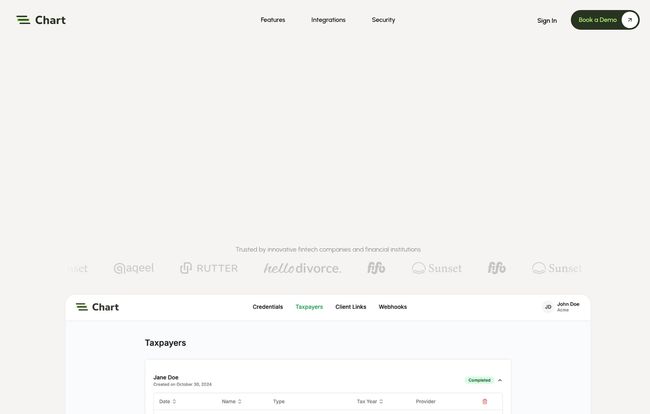
Visit Chart
The Nitty-Gritty: How It Actually Works
The magic is in the integration. Chart provides a REST API, which is the bread and butter for any modern tech stack. Your developers can use their SDKs and sandbox environment to build a verification flow directly into your app or website. Your client gets a prompt, they securely authorize access, and BAM. You get the data.
From Chaos to Clarity
The process is surprisingly straightforward. A client needs to be onboarded. Through your platform, they use Chart’s flow to grant access. Chart then securely connects to the IRS, pulls the relevant transcripts (like a 1040, W-2, or 1099), and then does its data-massaging magic. What comes out the other end is not a PDF, but that lovely JSON data, ready to be fed into your underwriting models or CRM. It's about turning government paperwork into a usable data asset.
They also mention that they package their models into high-performant C++ servers and deploy them into your own cloud account. This is a pretty big deal for security and data custody. It means the core processing can happen within your own walls, so to speak, which is a huge comfort for compliance teams.
The Good, The Quirks, and the Price Tag
No tool is perfect, right? Every platform has its strengths and, let’s call them, 'quirks'. After looking through their documentation and the general industry chatter, here's my breakdown.
The Things I Really Like
First off, the speed and accuracy. Getting verified data directly from the IRS cuts out so much of the fraud risk and the back-and-forth of manual reviews. It's a huge operational win. Then there's the security posture. Being SOC 2 Type II compliant isn’t easy; it's a rigorous, ongoing audit that proves you handle data seriously. Features like PII Reduction and non-persistent credentials show they're not just ticking a box; they're building security in from the ground up. This isn't just marketing fluff, its a core feature.
The developer-centric approach is also a massive plus. Good documentation, a sandbox, SDKs… it shows they respect developers' time. In the world of B2B SaaS, this is how you win hearts and minds.
The... Let's Call Them Considerations
Okay, now for the part that always gets my goat. The pricing. You go to their pricing page and… Page Not Found. Classic. You have to contact them for a custom quote. I get it, for enterprise software this is standard practice, but it's a personal pet peeve. It immediately puts a barrier up. You can't just quickly assess if its in your budget. You have to get on a call, go through a demo, and do the whole sales dance. It's efficient for them, but not always for a lean team trying to move fast.
The other interesting tidbit is that re-authentication is required for every session. Now, you can spin this two ways. It's either a fantastic security measure that ensures every single session is explicitly authorized, or it's a slight knock against user convenience. It's the eternal trade-off in security. For handling IRS-level data, I lean towards it being a necessary, if slightly annoying, feature.
So, Who Is This Really Built For?
Let's be clear: this isn't for your buddy's startup that sells dog bandanas. Chart is enterprise-grade infrastructure. It’s for companies where the cost of a bad decision is high and the volume of applications is significant.
We’re talking about:
- Digital Lenders: Speeding up loan approvals from days to minutes.
- Mortgage Companies: Automating one of the most paper-intensive parts of the application.
- Fintechs & Neobanks: Building slicker, faster, and more secure onboarding flows.
- Legal Tech: I see 'hellodivorce' is one of their clients, which makes total sense for verifying financials in legal proceedings.
If the cost of customer acquisition is high and your onboarding process is a leaky bucket, Chart is aimed squarely at you. It’s for businesses that understand that investing in backend automation directly impacts the front-end customer experience and, ultimately, the bottom line.
My Final Verdict
So, is Chart a game-changer? For the right company, I think it absolutely could be. It's not a magic wand, but it’s a powerful, specialized tool that solves a very real, very expensive problem.
It takes the single biggest bottleneck in many financial onboarding processes and replaces it with an API call. That’s a powerful transformation. It turns a manual, error-prone human process into a secure, scalable, and automated machine.
While the lack of public pricing is a hurdle, the value proposition is crystal clear. If you’re a product manager or CTO at a fintech and you lie awake at night thinking about operational drag and user drop-off during onboarding, you should probably bite the bullet and book that demo. It might just be the most productive sales call you have all year.
Frequently Asked Questions about Chart
What does Chart do?
Chart is a platform that automates income and employment verification for businesses like fintechs and lenders. It provides verified financial data by connecting directly to official sources like the IRS.
Is Chart secure to use?
Yes, security is a major focus. Chart is SOC 2 Type II compliant, uses non-persistent credentials, and offers features like PII Reduction and granular user controls to ensure data is handled safely.
How much does Chart cost?
Chart's pricing is not publicly listed. You need to contact their sales team for a custom quote based on your company's needs and usage volume. It is geared towards enterprise clients.
How is Chart different from a standard OCR tool?
An OCR tool simply tries to read a document you provide, which can be prone to errors and fraud. Chart connects directly to the data source (like the IRS) to pull verified transcripts, ensuring accuracy and authenticity. It also delivers this data in a clean, developer-friendly JSON format.
Who is the ideal customer for Chart?
The ideal customers are medium-to-large scale businesses in sectors like lending, mortgages, legal tech, and financial technology that need to perform frequent and reliable income verifications as part of their client onboarding or underwriting process.
Reference and Sources
- Chart Official Website
- Information on SOC 2 Compliance from AICPA
- Forbes Advisor: Why Income Verification Is A Must For Lenders
